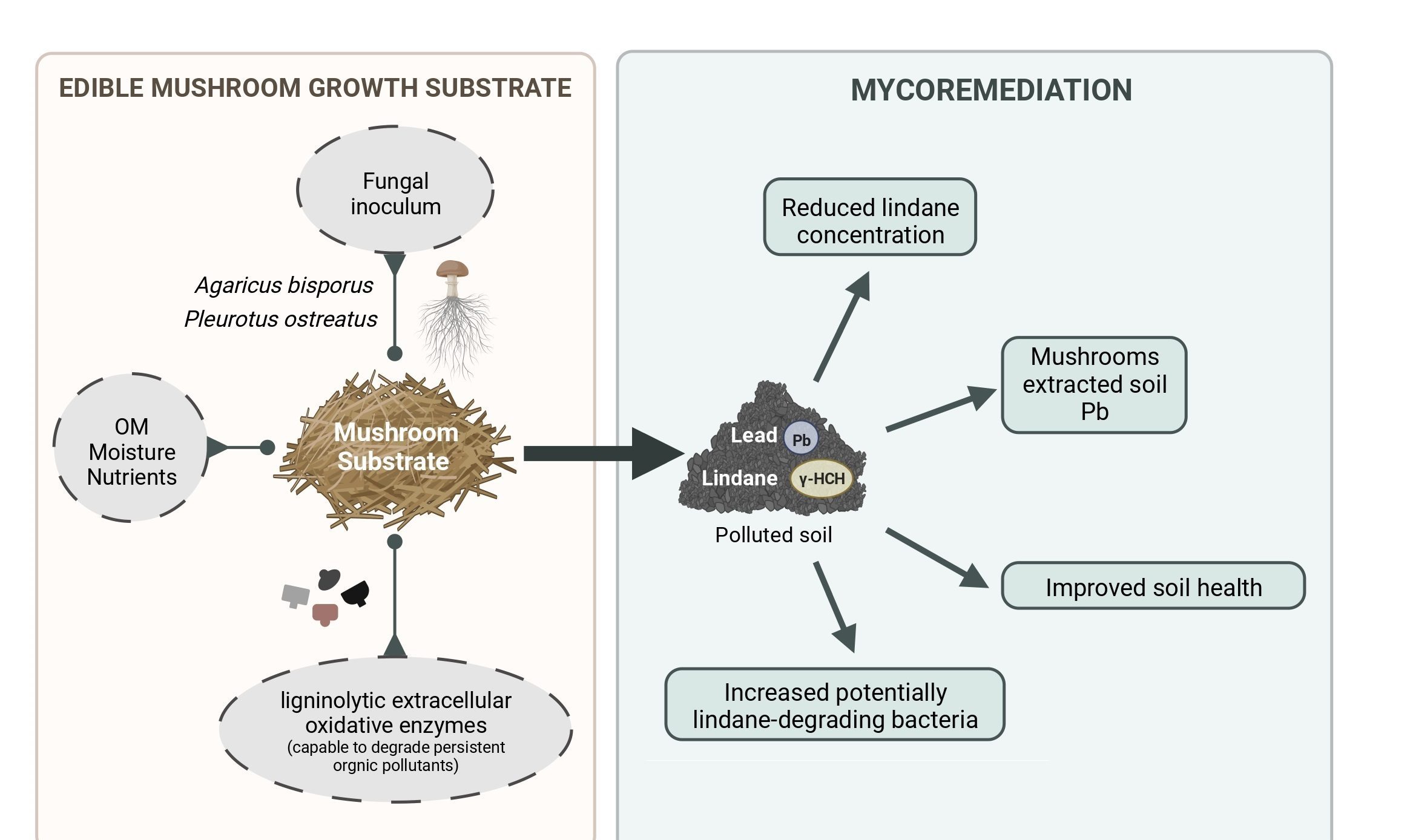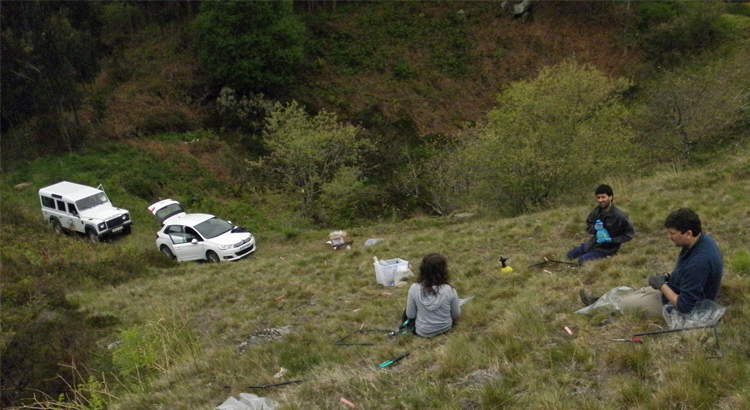Authors: June Hidalgo, Lur Epelde, Mikel Anza, José M. Becerril, Carlos Garbisu
Journal: Chemosphere
https://doi.org/10.1016/j.chemosphere.2023.138538
Mycoremediation with mushroom growth substrates can be used for the recovery of mixed contaminated soils due to the benefits derived from the physicochemical characteristics of the substrates, the activity of extracellular enzymes secreted by the fungi, and the presence of the fungal mycelia. The objective of this work was to assess the potential of Agaricus bisporus and Pleurotus ostreatus growth substrates (inoculated mushroom substrates vs. spent mushroom substrates) for the mycoremediation of soils co-contaminated with lead and lindane (g-HCH). We compared the efficiency of these mycoremediation strategies with the phytoremediation with Brassica spp. or Festuca rubra plants, in terms of both reduction in contaminant levels and enhancement of soil health. An enhanced soil health was achieved as a result of the application of mycoremediation treatments, compared to phytoremediation and control (untreated) treatments. The application of P. ostreatus inoculated substrate led to the most significant reduction in g-HCH concentration (up to 88.9% compared to corresponding controls). In the presence of inoculated mushroom substrate, P. ostreatus fruiting bodies extracted more Pb than Brassica spp. or F. rubra plants. Mycoremediation with P. ostreatus growth substrates appears a promising strategy for the recovery of the health of soils co-contaminated with Pb and g-HCH.




